
 |
|
#1
|
||||
|
||||
|
lads just shopping for gaskets, can anyone advise me exactly what unit i have in my carrier..... i know it is a carrier engine rather than a pilot or truck engine as the Oil cooler take offs are in the correct place ... but what the heck is it ?
it has the 24 stud heads, i am guessing (wildly here mind) that my unit is the Ford 221 CI lump... it looks to have a holley carb but have not inspected it closely.... anyone able to assist ? I was quoted £59.00 each + Vat for head gaskets alone at Belcher.... surely i can get them cheaper than this ? I will need a full gasket set, and a 4 ring full ringset, possibly a set of big ends and mains (i need to inspect the crank which is already on +10thou mains and big ends) here are the pics guys... if i can ID the engine i can trace down the gaskets and perhaps get them on ebay and sent to the UK for less than i have been quoted to date. 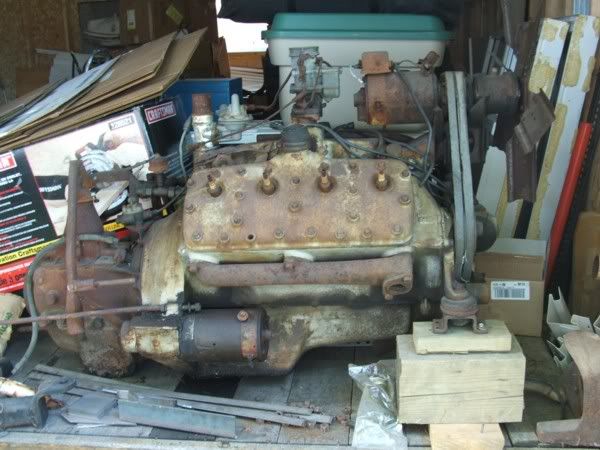 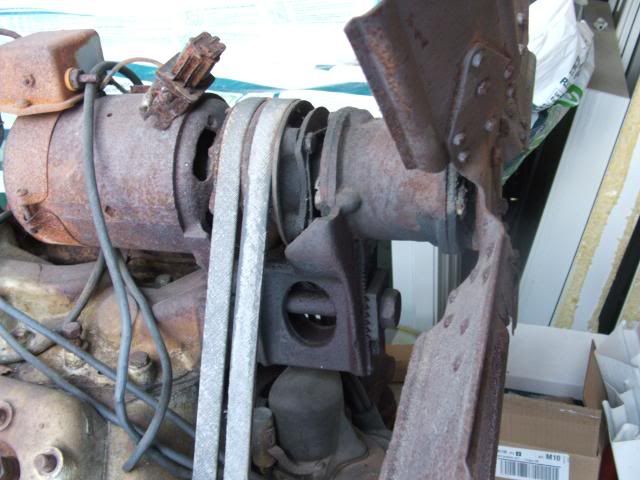 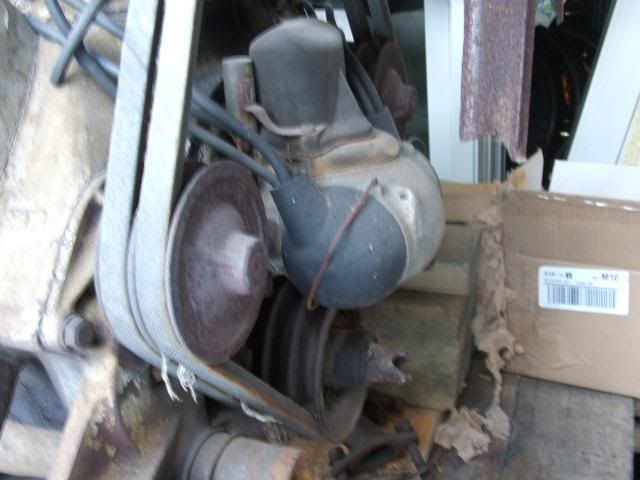 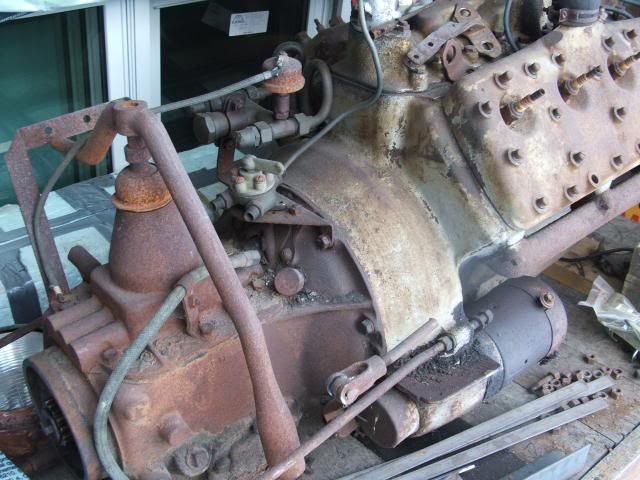 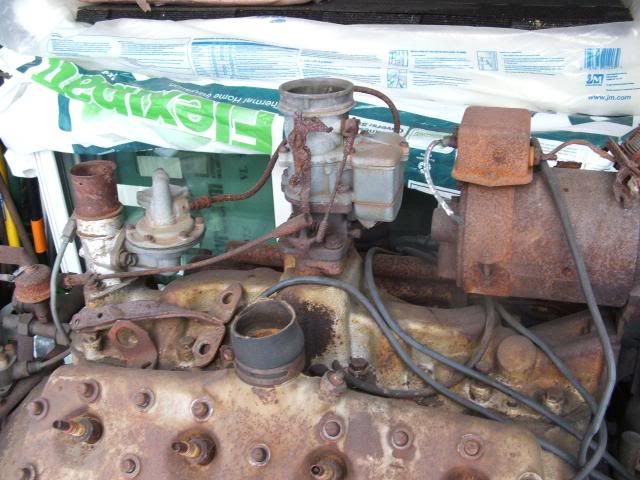 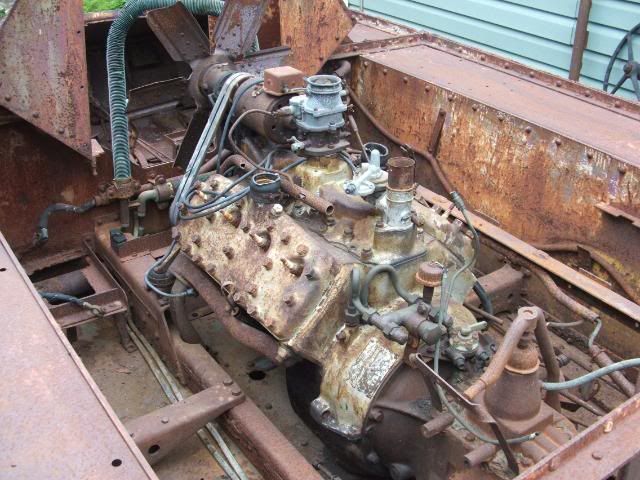 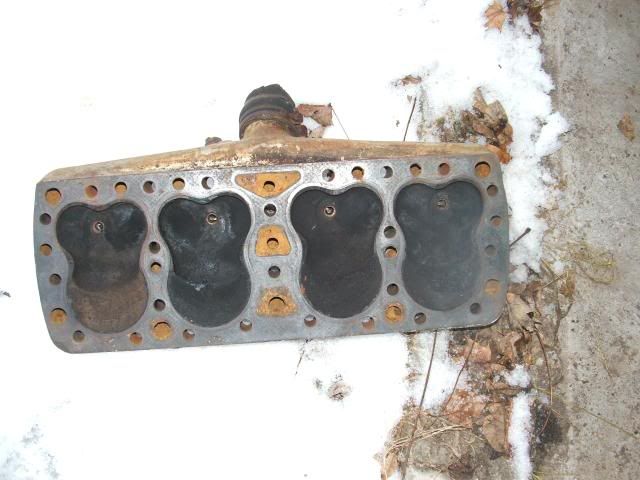 data plate states:- Torgis Engineering Co. Reconditioned motor specifications date 1534 Job no 0004-106 undersize 030 main size 010 throw size 010 15/03/45
__________________
is mos redintegro __5th Div___46th Div__ 1942 Ford Universal Carrier No.3 MkI* Lower Hull No. 10131 War Department CT54508 (SOLD) 1944 Ford Universal Carrier MkII* (under restoration). 1944 Morris C8 radio body (under restoration). Last edited by RichardT10829; 22-06-10 at 00:29. |
|
#2
|
||||
|
||||
|
..a plain old ford 221 from here, but I am squinting a bit.
__________________
Charles Fitton Maryhill On., Canada too many carriers too many rovers not enough time. (and now a BSA...) (and now a Triumph TRW...) |
|
#3
|
||||
|
||||
|
Hi Rich, I not sure what gasket set you will need, but be careful what you buy off Belcher Engineering, They sold me a NOS fuel pump that was as much good as a wheel on a walking stick and a set of ignition leads that came apart in your hand, I would get advice from someone in Canada and buy what you need from the US or Canada, thats what I will do when I rebuild my engine.
Whats happening with the wheel re-rubbering ?. Kev.
__________________
2pdr Tank Hunter Universal Carrier 1942 registered 11/11/2008. 3" Mortar Universal Carrier 1943 registered 06/06/2009. 1941 Standard Mk1 stowage Carrier, Caunter camo. 1941 Standard Mk1 stowage Carrier, light stone. 10 cwt wartime mortar trailer. 1943 Mk2 Daimler Dingo. 1943 Willys MB. 1936 Vickers MG carrier No1 Mk1 CMM 985. |
|
#4
|
||||
|
||||
|
Kevin i have a spare wheel buddy so if you are still up for what we discussed then i will get the ball rolling, i have located another firm here in newcastle so was waiting on the quotes coming back from them (before i post this stuff to Gloucester which will be expensive for me bearing in mind i dont get the wheel back....)
As for Belcher i was quoted £400 for a set of big ends !!!!! and the belts etc they advised (and were bloody outragous on price) were wrong.... i spoke to Mac Vanpelt via email and he said to check as the part numbers quoted were wrong for a 24 stud engine... i asked about the big ends etc and was told they are super rare and "special" Mac Vanpelt said they were two a penny ! the price i mentioned on my first post was for one...yes one head gasket ! if i had not built many a high performance engine i might have been suckered in luckily i am a tight ass so laughed and hung up on the chap..... i had specialist main shells made for my rally x car shipped in from Europe they were one offs and they didnt even cost what i was quoted ! Charlie are there any tell tale signs i can look for on the lump ? i hear 8BA 9BA etc etc bandied about various forums etc i take it these are the engine models ? I cant see anything obvious on my engine ?
__________________
is mos redintegro __5th Div___46th Div__ 1942 Ford Universal Carrier No.3 MkI* Lower Hull No. 10131 War Department CT54508 (SOLD) 1944 Ford Universal Carrier MkII* (under restoration). 1944 Morris C8 radio body (under restoration). |
|
#5
|
||||
|
||||
|
ok Many thanks to Don Barrie from Thunder Bay Ontario ! emailed him before and he says the main difference between the Ford lump and the Merc is the bore on a ford unit is 3" 1/16th and the Merc is 3" 3/16 So will have to measure mine......
anyone dealt with "Patricks" in Casa Grande Arizona ?
__________________
is mos redintegro __5th Div___46th Div__ 1942 Ford Universal Carrier No.3 MkI* Lower Hull No. 10131 War Department CT54508 (SOLD) 1944 Ford Universal Carrier MkII* (under restoration). 1944 Morris C8 radio body (under restoration). |
|
#6
|
||||
|
||||
|
Talked to a freind of Mine about these Motors last night .He said this is a french company that copied the Merc Flathead and made it Better.
Jeff Davis |
|
#7
|
|||
|
|||
|
Mac's Antique Auto parts, They have everything you need for your Flathead.
 Regards Aidan Regards Aidan
|
|
#8
|
||||
|
||||
|
i have been told that Belcher here in the Uk buys his kit from Mac... then marks up the price by a factor of twelve

__________________
is mos redintegro __5th Div___46th Div__ 1942 Ford Universal Carrier No.3 MkI* Lower Hull No. 10131 War Department CT54508 (SOLD) 1944 Ford Universal Carrier MkII* (under restoration). 1944 Morris C8 radio body (under restoration). |
|
#9
|
||||
|
||||
|
some information has come through from Vanpelts.
Quote:
__________________
is mos redintegro __5th Div___46th Div__ 1942 Ford Universal Carrier No.3 MkI* Lower Hull No. 10131 War Department CT54508 (SOLD) 1944 Ford Universal Carrier MkII* (under restoration). 1944 Morris C8 radio body (under restoration). Last edited by RichardT10829; 21-06-10 at 22:49. |
|
#10
|
||||
|
||||
|
Belcher Engineering dont do themselves any favours, they are 30 minutes up the road from me but I wont me going there any time soon.
Let us know the costs involved for the wheel and any local quotes you might get. Kev.
__________________
2pdr Tank Hunter Universal Carrier 1942 registered 11/11/2008. 3" Mortar Universal Carrier 1943 registered 06/06/2009. 1941 Standard Mk1 stowage Carrier, Caunter camo. 1941 Standard Mk1 stowage Carrier, light stone. 10 cwt wartime mortar trailer. 1943 Mk2 Daimler Dingo. 1943 Willys MB. 1936 Vickers MG carrier No1 Mk1 CMM 985. |
|
#11
|
||||
|
||||
|
Will do buddy.
So reading the spec sheet above guys i think mine is a ford 221 CI 85 bhp 24 stud unit 1939 - 42 possibly an 81A hopefully this info will help others too 
__________________
is mos redintegro __5th Div___46th Div__ 1942 Ford Universal Carrier No.3 MkI* Lower Hull No. 10131 War Department CT54508 (SOLD) 1944 Ford Universal Carrier MkII* (under restoration). 1944 Morris C8 radio body (under restoration). |
|
#12
|
|||
|
|||
|
Your block should have a number on the flat area just infront of the lh head (you facing forward in the carrier) eg the 81A.
__________________
Bluebell Carrier Armoured O.P. No1 Mk3 W. T84991 Carrier Bren No2.Mk.I. NewZealand Railways. NZR.6. Dodge WC55. 37mm Gun Motor Carriage M6 Jeep Mb #135668 So many questions.... |
|
#13
|
||||
|
||||
|
cheers lynn
__________________
is mos redintegro __5th Div___46th Div__ 1942 Ford Universal Carrier No.3 MkI* Lower Hull No. 10131 War Department CT54508 (SOLD) 1944 Ford Universal Carrier MkII* (under restoration). 1944 Morris C8 radio body (under restoration). |
|
#14
|
|||
|
|||
|
Richard - if you remove the mounting bracket for the fuel change over valve on you might find the engine number stamped above the clutch housing vent plate.
Regards, Terry.
__________________
Terry F30 13 Cab CMP Morris Commercial C8 |
|
#15
|
||||
|
||||
|
Cheers Terry, I got your Pm about parts cheers for that.
Richie
__________________
is mos redintegro __5th Div___46th Div__ 1942 Ford Universal Carrier No.3 MkI* Lower Hull No. 10131 War Department CT54508 (SOLD) 1944 Ford Universal Carrier MkII* (under restoration). 1944 Morris C8 radio body (under restoration). |
|
#16
|
||||
|
||||
|
for one of my carrier engines stamped into the machined area on top of the block where the intake manifold sits.
If you have a true "carrier" engine the valve seats are hardened inserts - they were apparently planning on using a lot of alcohol if they had to. I think your best bet for parts is MACs in Queenston NY. even the big "doublewide" big end bearings. On-line catalog and the Yankee Dollar is down a bit...
__________________
Charles Fitton Maryhill On., Canada too many carriers too many rovers not enough time. (and now a BSA...) (and now a Triumph TRW...) |
|
#17
|
||||
|
||||
|
Cheers guys... on the gaskets front without trying too hard i can get a full set off ebay delivered from the US to my door for £90 so the £59 + Vat each for a single head gasket price tag i have to question where or what planet the quote came from... i cant get this Adam and the Ants song out of my head every time i read his quote !
http://www.youtube.com/watch?v=PonczpswC3s
__________________
is mos redintegro __5th Div___46th Div__ 1942 Ford Universal Carrier No.3 MkI* Lower Hull No. 10131 War Department CT54508 (SOLD) 1944 Ford Universal Carrier MkII* (under restoration). 1944 Morris C8 radio body (under restoration). |
|
#18
|
||||
|
||||
|
Be sure that you really study both sides of the block and compare it to the head gaskets when you get them in. When doing my project, I had a couple of sets that were listed for the engine, along with a few other minor variations. What I found was they fit the studs perfectly but some passages were obstructed. They could have been modified to fit using a dremil tool with a small cutting disc but I was fortunate to pick up a pair of solid copper head gaskets that were an exact match prior to final assembly of my engine. Not sure if the copper gaskets are really any better but they were a high performance item from the early 50s and I figured they would be more understanding and forgiving of my heavy handed work methods. Having three sizes of hammers for auto repairs works well for most things but the engine seems to be more sensitive.

__________________
David Gordon - MVPA # 15292 '41 Willys MB British Airborne Jeep '42 Excelsior Welbike Mark I '43 BSA Folding Military Bicycle '44 Orme-Evans Airborne Trailer No. 1 Mk. II '44 Airborne 100-Gallon Water Bowser Trailer '44 Jowett Cars 4.2-Inch Towed Mortar '44 Daimler Scout Car Mark II '45 Studebaker M29C Weasel |
|
#19
|
|||
|
|||
|
What you say about yourself, and what the pictures show, do not match.
__________________
Bluebell Carrier Armoured O.P. No1 Mk3 W. T84991 Carrier Bren No2.Mk.I. NewZealand Railways. NZR.6. Dodge WC55. 37mm Gun Motor Carriage M6 Jeep Mb #135668 So many questions.... |
|
#20
|
||||
|
||||
|
Flathead Jacks is my favourite place for flattie parts. I see in the online catalogue they have full gasket sets for $82 US so you should get them for around 60 pounds or so delivered.
__________________
1940 Cab 11 C8 Wireless with 1A2 box & 11 set 1940 Cab 11 C8 cab and chassis 1940 Cab 11 C15 with 2A1 & Motley mount & Lewis gun 1940 Cab 11 F15A w/ Chev rear ends 1941 Cab 12 F15A 1942-44 Cab 13 F15A x 5 1942 cab 13 F15A with 2B1 box 1943 cab 13 F15A with 2H1 box 1943 Cab 13 C8A HUP 1944 Cab 13 C15A with 2C1 box 1943 Cletrac M2 High Speed Tractor MkII Bren gun carrier chassis x 2 |
|
#21
|
||||
|
||||
|
right i took some photo's of my engine in bits whilst down Lincoln way... the crank journals will need a re grind (it is the centre main that is the worst) so looks like i will be go for +20thou bearings....
  
__________________
is mos redintegro __5th Div___46th Div__ 1942 Ford Universal Carrier No.3 MkI* Lower Hull No. 10131 War Department CT54508 (SOLD) 1944 Ford Universal Carrier MkII* (under restoration). 1944 Morris C8 radio body (under restoration). |
 |
| Thread Tools | |
| Display Modes | |
|
|